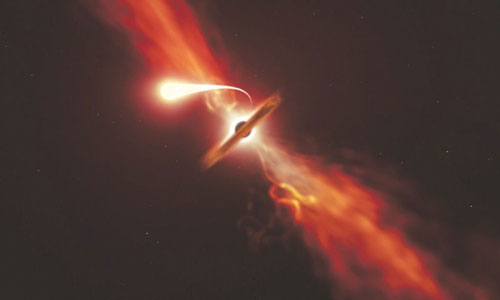Paris
Astronomers have captured the moment a supermassive black hole shredded a star the size of our Sun, releasing images on Monday showing the devastating process in unprecedented detail.
Using telescopes from the European Southern Observatory (ESO), they were able to monitor light flaring from the process — known as a tidal disruption event — from a black hole just over 215 million light years from Earth.
They observed the star being physically torn apart as it was sucked into the black hole’s giant maw.
“The idea of a black hole ‘sucking in’ a nearby star sounds like science fiction,” said Matt Nicholl, a lecturer and Royal Astronomical Society research fellow at the University of Birmingham, lead author of Monday’s study. “But that’s exactly what happens in a tidal disruption event.” When a star strays too close to a supermassive black hole, it is subjected to the phenomenal strength of the black hole’s gravity.
The star can be physically torn apart and its matter pulled into long strings, a process known as “spaghettification”.
“When these forces exceed the star’s cohesive force, the star loses pieces that rush into the black hole,” Stephane Basa, a researcher from the Marseille Astrophysics Laboratory, said.
“This exceptional influx of matter produces intense electromagnetic emissions, which last for several months while the debris is digested.” Basa said that around half of the star remained after the tidal disruption event. “‘Only’ half of its mass has disappeared,” he said.
While other tidal disruption events have previously been observed, the powerful burst—AFP










